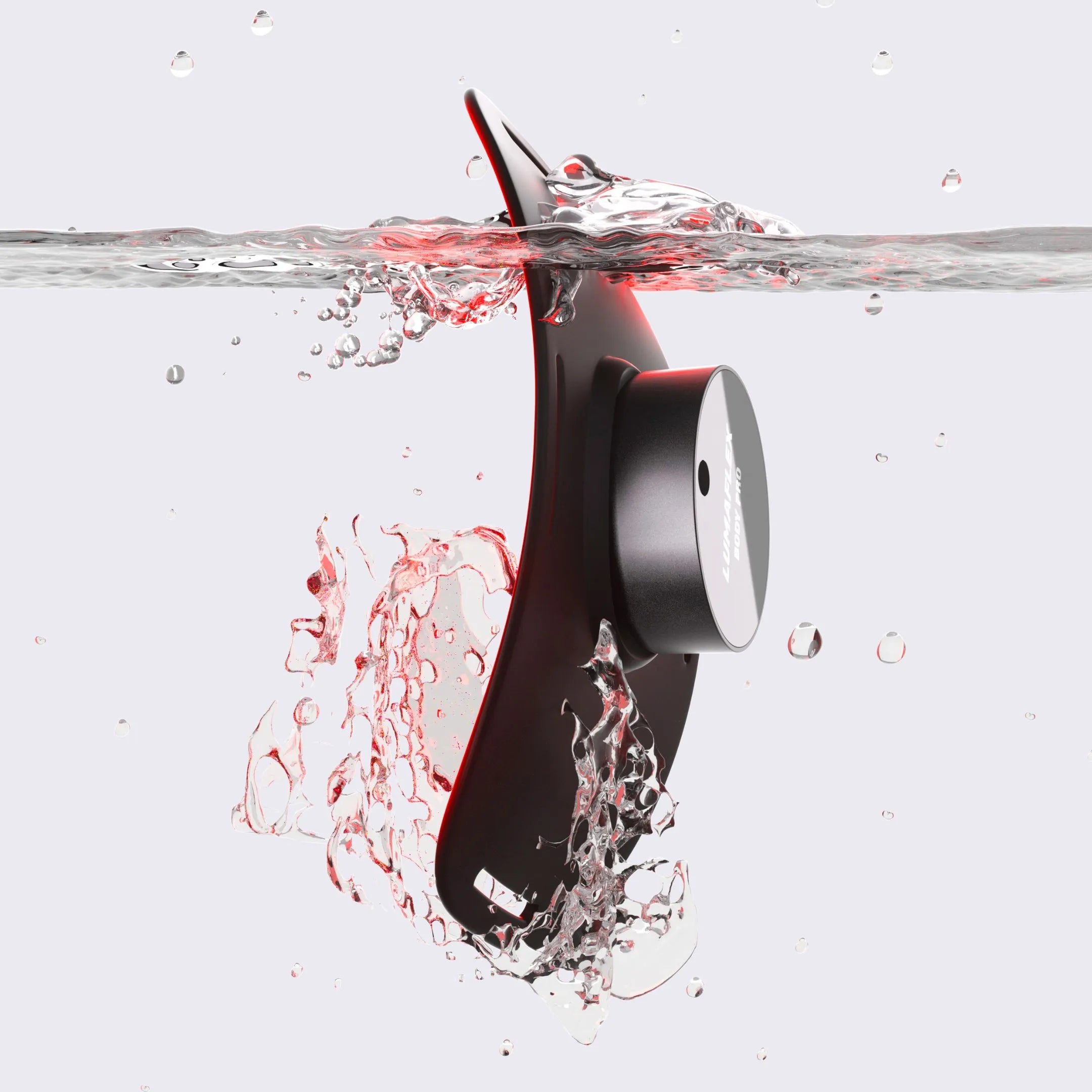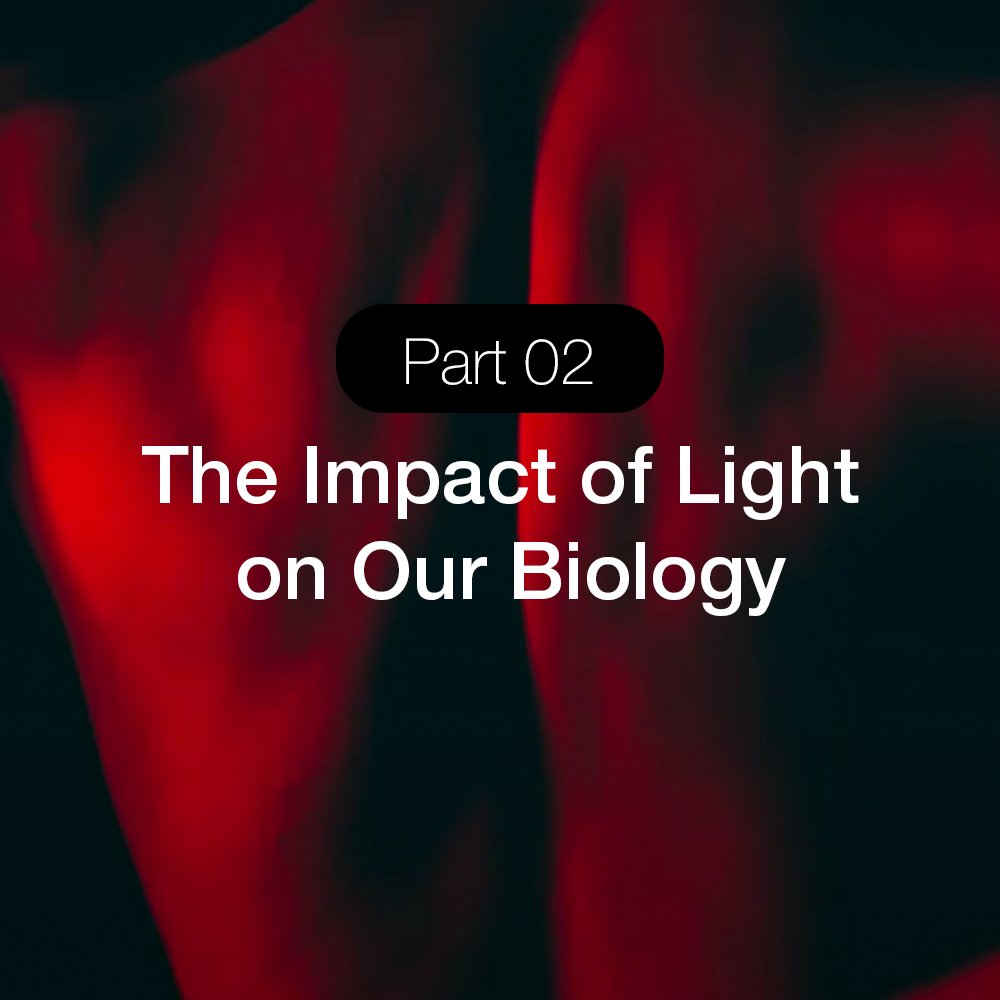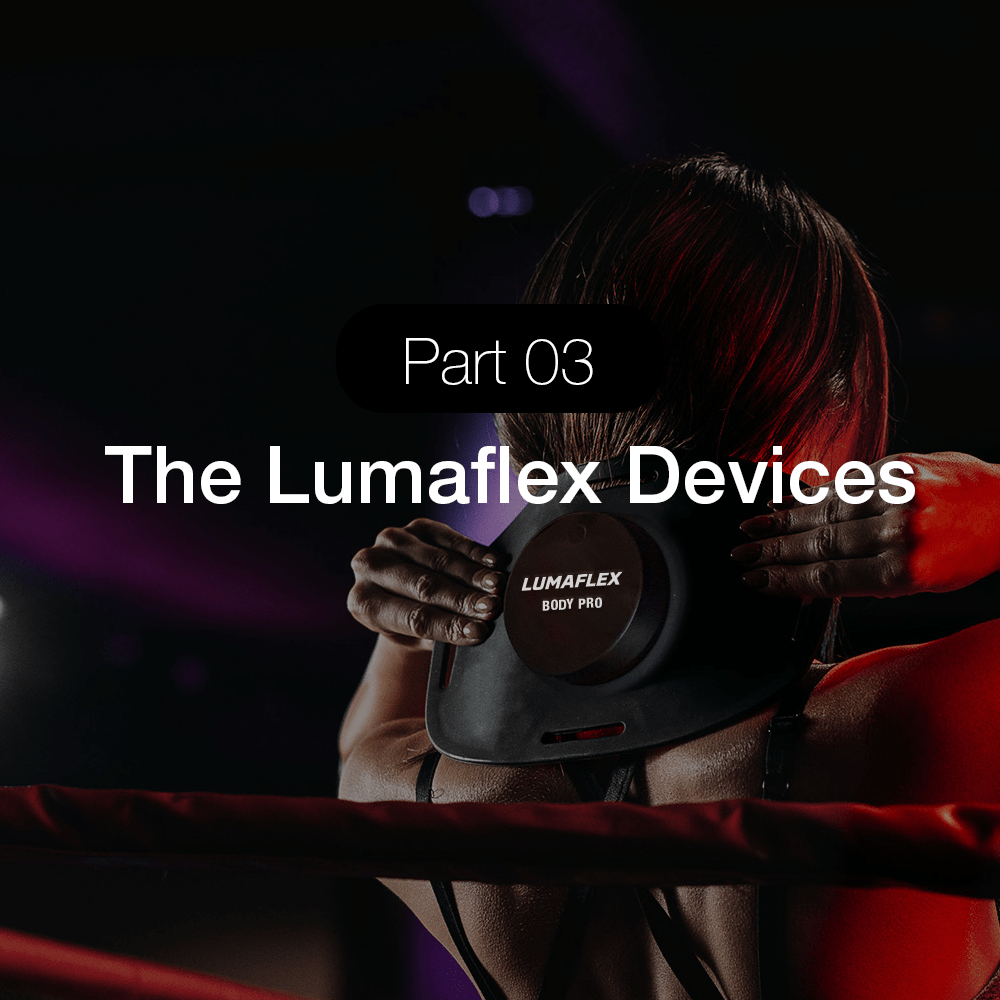Red Light Wavelengths for Pain, Bone Healing & Recovery

The Different Red Light Wavelengths for Healing
Not all therapies provide the same results when it comes to pain relief and healing. Red light wavelengths such as 630nm, 660nm, 850nm, 904nm, and 1064nm are recognized as some of the most effective tools for recovery. Unlike ordinary light, medical-grade red light therapy devices use these targeted wavelengths to penetrate different depths of tissue, from the skin’s surface to muscles, joints, and even bones.
Why does wavelength matter? Each range interacts with the body in unique ways. Shorter wavelengths reduce inflammation and support surface healing, while deeper near-infrared and infrared wavelengths accelerate bone repair and long-term recovery. Whether you are an athlete managing joint pain, a senior focusing on bone health, or recovering from surgery, choosing the right red light wavelength can mean the difference between temporary relief and lasting change.
Table of contents
What Is Red Light Wavelength?
Red light wavelengths are measured in nanometers (nm), which describe the distance between peaks of light waves. These measurements determine how deeply light can travel into the body during therapy. The deeper the penetration, the more impact the wavelength can have on muscles, joints, and bones.
In red light therapy, two main wavelength categories are used:
Visible Red Light (600–700 nm)
This is the red light you can see with your eyes. It reaches just below the skin’s surface and is most effective for improving skin health, reducing surface-level inflammation, and supporting wound healing.
Near-Infrared Light (800–1100 nm)
This form of light is invisible to the eye but travels much deeper into the body. Near-infrared wavelengths reach muscles, connective tissue, joints, and even bone. Because of this, they are especially valuable for pain relief, bone healing, and long-term recovery.
Why Depth of Penetration Matters
The effectiveness of red light therapy depends on selecting the correct wavelength for your needs. Shorter visible red wavelengths (around 630 to 660 nm) are best for surface issues like skin repair and reducing inflammation. Longer near-infrared wavelengths (850 nm, 904 nm, 1064 nm) reach deeper tissues and are more effective for joint pain, fractures, and bone regeneration. Matching the wavelength to your condition ensures that the light reaches the areas that need healing most.

Best Red Light Wavelengths for Pain Relief
Different red light wavelengths target pain at different depths. Some are ideal for surface-level issues like inflammation, while others reach deep into muscles, joints, and bones. Here is a breakdown of the most effective wavelengths and how they support pain relief.
630nm and 635nm Red Light Therapy
These shorter wavelengths stay near the skin’s surface. They are effective for calming inflammation, soothing nerve-related pain, and supporting conditions such as Carpal Tunnel Syndrome. They also boost blood flow and collagen production, which speeds up wound healing, reduces redness, and improves skin repair. If your pain is close to the surface, these wavelengths are a good starting point.
660nm Red Light Therapy
The 660nm wavelength is one of the most widely used and studied in red light therapy. It reaches slightly deeper than 630nm and reaches connective tissues and muscles. This makes it effective for joint inflammation, arthritis, tendonitis, and post-workout soreness. It also supports collagen repair around bones, helping with recovery after injuries. Many medical-grade devices include 660nm because it balances surface and mid-level therapeutic benefits
850nm Near-Infrared Light
The 850nm wavelength extends more deeply into the body compared to visible red light. It reaches muscles, joints, and shallow bone tissue, making it one of the best choices for arthritis, chronic joint pain, and stress fractures. Research also shows that 850nm enhances mitochondrial energy production, which helps speed up recovery and reduce fatigue.
904nm Therapy Light
The 904nm wavelength is commonly used in clinical and medical-grade devices. It reaches deep into muscles and connective tissues, supporting recovery from herniated discs, sprains, and musculoskeletal injuries. It is valued for its strong anti-inflammatory effect and its ability to promote lasting pain relief, not just short-term comfort.
1064nm Infrared Light
Among all red light wavelengths, 1064nm penetrates the deepest. It can reach large joints and even bone marrow. This wavelength is often recommended for severe arthritis, long-term joint degeneration, and difficult-to-heal fractures. It is also linked to stimulating stem cells and osteoblasts, which are essential for bone regeneration and advanced recovery.
Choosing the Right Wavelength
For surface-level issues and nerve pain, start with 630–660nm.
For muscle and joint pain, 850nm and 904nm provide deeper relief.
For advanced bone healing and severe chronic pain, 1064nm is the most effective.
Many medical-grade devices now combine multiple red light wavelengths for pain relief, providing layered benefits that address both surface and deep tissue healing.
Comparison Table: Red Light Wavelengths for Pain Relief
| Wavelength | Penetration Depth | Best For |
|---|---|---|
| 630–635nm | Skin surface | Inflammation, nerve pain, wound healing |
| 660nm | Connective tissue, muscles | Arthritis, tendonitis, post-workout recovery |
| 850nm | Deep muscle, shallow bone | Chronic joint pain, stress fractures, arthritis |
| 904nm | Deep musculoskeletal tissue | Herniated discs, sprains, long-term pain relief |
| 1064nm | Deepest penetration (bone marrow) | Severe arthritis, fractures, advanced bone healing |
How Red Light Wavelengths Impact Bone Health and Recovery
Bone healing and recovery depend on light penetration depth. While shorter red light wavelengths (630nm and 660nm) mainly support surrounding tissues, near-infrared and infrared ranges (850nm, 904nm, and 1064nm) reach bone tissue directly. Research in photobiomodulation for bone recovery shows that these wavelengths stimulate bone repair, reduce inflammation, and improve long-term outcomes.
850nm Red Light for Bone Surface and Early Recovery
The 850nm wavelength penetrates into the periosteum (the bone’s outer layer) and shallow bone tissue. It activates osteoblasts, the cells responsible for building new bone, which accelerates fracture healing. This wavelength also reduces swelling and pain around the injury site, making it effective for stress fractures and early-stage bone injuries.
904nm Infrared Light for Density and Repair
The 904nm wavelength reaches deeper layers and supports circulation and oxygen delivery to bone tissue. This improves the body’s ability to regenerate stronger bone over time. It is often recommended for osteoporosis management because it helps maintain density. Patients recovering from spinal surgery or orthopedic procedures also benefit from 904nm, as it supports steady bone regeneration
1064nm Infrared Light for Advanced Healing
The 1064nm wavelength provides the deepest penetration among red light therapy options. It can reach large joints and even bone marrow. This makes it especially valuable for non-union fractures (injuries that fail to heal properly), severe arthritis, and long-term degenerative conditions. It stimulates both stem cells and osteoblasts, accelerating complex recovery processes.
The Role of Shorter Wavelengths (630–660nm)
Shorter red light wavelengths aid in healing even though they cannot directly reach the bone. Red light at 630–660 nm eases pain, lowers inflammation, and increases collagen synthesis in the ligaments and tendons surrounding the injury. As a result, the environment for bone healing becomes stronger and more stable.
Why Multi-Wavelength Therapy Is Most Effective
Using multi-wavelength red light therapy provides layered benefits for bone health. Near-infrared wavelengths like 850nm and 904nm stimulate bone tissue, while shorter wavelengths (630nm and 660nm) reduce surrounding inflammation. Clinical studies in the Current Medicinal Chemistry show that combining multiple wavelengths speeds recovery more effectively than using a single range.

Choosing the Right Red Light Wavelength in Devices
When shopping for a red light therapy device, one of the most important features to check is the wavelength range. The effectiveness of your treatment depends on whether the device includes the wavelengths that match your needs, such as pain relief, muscle recovery, or bone healing.
Single-Wavelength Devices
Some devices use only one wavelength, such as 660nm. While this can reduce inflammation and improve skin health, it does not provide the deeper penetration needed for joints, muscles, or bone recovery. Single-wavelength devices are best for surface-level issues but have limitations for long-term pain or injury management.
Multi-Wavelength Devices
The most effective medical-grade red light therapy devices include multiple wavelengths. For example:
660nm supports collagen production and reduces inflammation.
850nm penetrates into muscles and joints.
904nm supports circulation and bone regeneration.
1064nm provides the deepest healing for severe pain and advanced bone recovery.
By combining these ranges, multi-wavelength devices offer both immediate relief and deeper structural healing.
Lumaflex Essential Pro and Targeted Wavelength Technology
One example of a brand applying this approach is Lumaflex. Their new device, The Essential Pro is designed with targeted wavelengths that cover surface-level, mid-depth, and deep-tissue needs in one system. This allows users to benefit from the layered effects of 630nm, 660nm, 810nm, 850nm, 904nm, and 1064nm in a single treatment session.
By making multi-wavelength technology accessible at home, Lumaflex bridges the gap between clinical results and convenient daily recovery.

Who Benefits Most from Specific Red Light Wavelengths?
Different people benefit from different red light wavelengths, depending on whether the goal is performance, recovery, or long-term health. Here are some of the groups that see the strongest results.
Athletes Looking for Faster Recovery
Athletes often push their bodies to the limit, which leaves muscles sore and joints inflamed. Deeper wavelengths like 850nm, 904nm, and 1064nm reach into muscles, connective tissue, and even bone to accelerate recovery from stress fractures, sprains, and overuse injuries. Adding 660nm for surface-level inflammation can reduce swelling and help the body bounce back after intense training. Together, these wavelengths support faster turnaround times between workouts and more resilient performance.
Seniors Supporting Bone and Joint Health
As people age, joints stiffen and bone density gradually decreases. For seniors, a balance of 660nm and 850nm provides both surface comfort and deeper bone support. The 660nm wavelength helps manage arthritis-related inflammation near the skin and connective tissues, while 850nm stimulates circulation and osteoblast activity in bone tissue. This combination helps preserve mobility, reduce stiffness, and promote long-term bone strength, which is especially valuable for those managing conditions like osteoporosis.
Post-Surgery Patients Seeking Comprehensive Healing
Surgical recovery often involves more than one layer of tissue. Incisions heal at the surface, while ligaments, muscles, and sometimes bone require deeper repair. Using multiple red light wavelengths addresses each stage at once. 630nm and 660nm encourage incision healing and reduce surface inflammation, while 850nm supports muscle and ligament recovery. For procedures involving bone, 904nm and 1064nm stimulate regeneration and improve structural healing. Multi-wavelength therapy gives patients a smoother and more complete recovery process.
By tailoring red light therapy to specific needs, athletes, seniors, and post-surgery patients can all experience meaningful results. What matters most is choosing the right mix of red light wavelengths to match the body’s unique challenges.
Frequently Asked Questions About Red Light Wavelengths
What is the wavelength of red light?
Red light generally falls between 600 and 700 nanometers (nm). In therapy, the most common ranges are 630nm and 660nm, which target surface-level healing and inflammation
What wavelength of red light is best?
The best wavelength depends on your goal. Shorter wavelengths like 630–660nm are ideal for skin and inflammation, while deeper wavelengths such as 850nm, 904nm, and 1064nm are more effective for joints, muscles, and bone healing.
Is 810nm or 830nm red light therapy better?
Both are near-infrared wavelengths with strong therapeutic effects. 810nm is often studied for neurological and cellular benefits, while 830nm is commonly used for musculoskeletal recovery. Many advanced devices use both for well-rounded results.
What is the difference between 660nm and 850nm red light therapy?
The 660nm wavelength is visible red light that works on the skin, connective tissue, and surface inflammation. The 850nm wavelength is near-infrared and penetrates deeper into muscles, joints, and shallow bone tissue, making it better for arthritis and fracture recovery.
Is red or infrared light better for bone healing?
Infrared wavelengths (850–1064nm) are better for reaching bone tissue and stimulating osteoblasts and stem cells. Red light (630–660nm) mainly reduces inflammation in surrounding tissue, so combining both offers the strongest results.
Are medical-grade red light devices safe for home use?
Yes. When FDA-cleared and used correctly, they are safe. Brands like Lumaflex design devices with clinically tested wavelengths, making professional-level recovery accessible at home.
Final Thoughts on Red Light Wavelengths
The real power of red light therapy comes from choosing the right wavelength for the right purpose. Shorter ranges like 630nm and 660nm ease surface inflammation and support tissue repair. Deeper wavelengths such as 850nm and 904nm go further, reaching muscles, joints, and even bone to stimulate stronger recovery. At the deepest level, 1064nm activates stem cells and drives advanced healing, making it especially valuable for long-term bone health and difficult injuries.
When combined, these wavelengths create a layered approach that addresses everything from surface pain to deep structural repair. That is why multi-wavelength devices are becoming the standard for people who want both immediate relief and lasting results.
Brands like Lumaflex have taken this science and built it into medical-grade devices that make recovery more accessible at home. By integrating clinically proven red light wavelengths, they give users the same spectrum of benefits once limited to professional settings.
In the end, understanding red light wavelengths is not just about numbers on a device. It is about matching light to healing needs, whether that means easing pain today or rebuilding strength for the future.































